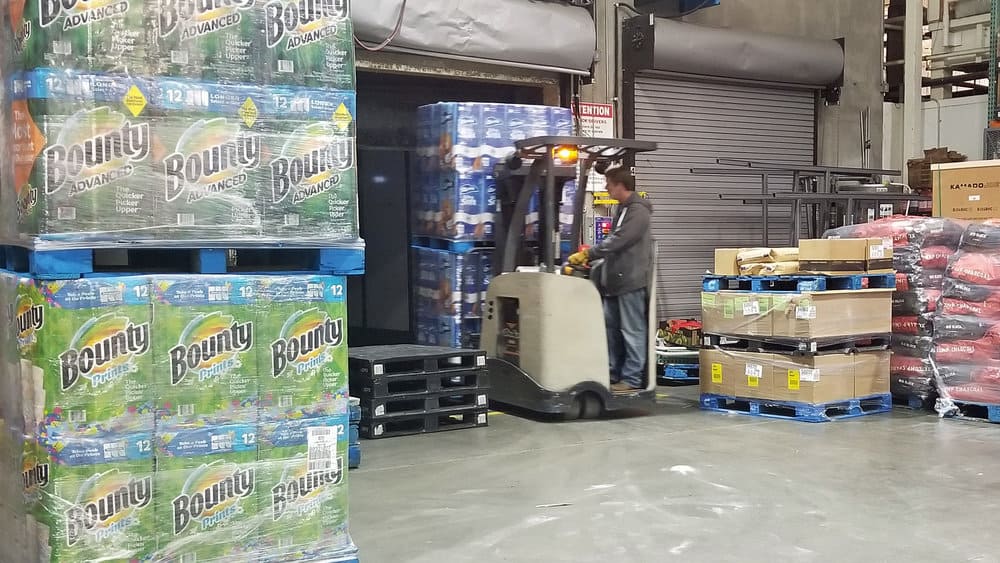
COLUMBUS, Indiana. For two days, attendees at the ACT Research Seminar 60 in Columbus, Indiana, heard mixed signals on the economy and specifically the freight environment. No one wanted to say the word recession, but it came up in nearly every presentation. Are we heading towards one or not?
There was no clear indication from the presenters, just many data points that could be interpreted in several ways, but perhaps there is enough noise around the current conditions that it’s possible America talks itself into a recession. Is the economy as good as it was last year? Not at this point. Is the freight environment as good as it was last year? Not at this point.
But is it that bad? Not at all.
What all the fleet professionals who spoke during the event said was that the freight environment is slowing down, but it still remains good, and slow isn’t necessarily bad. ACT’s experts are predicting Class 8 retail truck sales above 250,000 this year and orders of about 335,000 – very good numbers.
“The freight markets have been good and that’s what’s pushed truck sales,” said Craig Kendall, specialty markets manager for the Pete Store, a Peterbilt dealership with 16 locations stretching the East Coast. “The economy is good and you don’t have truck sales without freight.”
Kendall was joined on a panel discussion March 27, 2019, by Gary Petty, president & CEO of the National Private Truck Council, Jeff Bronson, senior director of transportation for flatbed and logistics company Atlas Trucking Company, and Thom Albrecht, executive vice president, chief financial officer and chief strategy officer for Celadon Group (OTC US: CGIP).
“Freight to start 2019 has been a bit sluggish,” Albrecht said. “I think over the next year-and-a-half there will be a disconnect with how carriers describe [the environment]. I think there has been more growth in supply than carriers want to admit.”
Albrecht said he had spoken with a large brokerage who acknowledged it had seen an 11 percent increase in capacity last year, but freight demand is now returning to “more normal levels.”
“Combined with an [increase] in supply and freight feels a little sloppy at this point,” he said.
Petty concurred that capacity has grown, saying that NPTC member companies increased capacity in 2018, in part to gain more control over rising purchased transportation costs. Private fleets typically handle about 70 percent of their parent’s freight on average with the remainder outsourced. Petty said one fleet he spoke with, which handles deliveries for a large big box retailer, said that in 2017, outsourcing costs rose 25 percent; in 2018, those costs rose 60 percent.
“The price of the driver is ratcheting up so fast that companies can’t compete,” he said, noting that one “unnamed” company recently upped starting driver pay to $85,000 with three weeks of vacation time to attract drivers.
“There’s growth and private fleets are trying to get control of that piece to [manage their freight],” Petty said.
“The freight side is pretty good,” Kendall added. “The carriers have added capacity and they’ve gotten paid for it, but now the capacity has caught up with demand, and usually when that happens, we see [rates] start to come down.”
According to DAT, the national average for dry van spot rates has dropped from $2.08 per mile in December 2018 to $1.87 per mile in March.
Albrecht noted that freight is not bad, just not as good as it was last year, and rates are being affected by increased competition. For instance, he said Celadon recently bid on 12 refrigerated lanes, placing those bids at the “targeted price” by the shipper, which represented about a 2 percent decrease, and Celadon lost 11 of those 12 bids.
“The market has gotten more competitive than a lot of folks are willing to say,” he said.
Bronson said he is seeing a similar situation in his business, which is largely an expedited flatbed business hauling a lot of steel and aluminum. After seeing a record year in 2018, he said Atlas still expects a 5 percent to 7 percent increase this year, but that it hasn’t materialized the way he hoped so far.
“Talking to customers, we were told to be ready in March for max capacity, and based on the numbers I’ve seen, that hasn’t happened,” he said. “It’s been good, but not as good as expected.”
A great example of what the panelists were talking about came from Covenant Transportation (NASDAQ: CVTI) CEO David Parker in a March 18 press release.
“The truckload freight environment has been weaker this year from late January through mid-March,” Parker said. “We attribute the softer demand to factors such as late 2018 inventory growth in advance of the perceived impact of tariffs, the effects of the partial government shutdown on spending and extended periods of inclement weather that impacted the timing of shipping seasonal goods, as well as our ability to safely dispatch our equipment.”
Despite reporting a 34.9 percent climb in consolidated freight revenue for the first two months of 2019, compared to the same period in 2018 and a 5.5 percent compared with the prior year period after excluding the effects of the company’s Landair acquisition, Parker said Covenant would miss analyst expectations for the first quarter of 36 cents per share.
The company expects to post adjusted net income in the range of $3.4 million to $4.9 million, or 18 cents to 26 cents per diluted share for the first quarter of 2019, compared to adjusted net income of $4.4 million, or 24 cents per diluted share for the first quarter of 2018.
Albrecht said Covenant may not be alone.
“We saw Covenant Transportation pre-announce on conditions and I don’t think they will be the only one,” he said.
Following the panel, Albrecht did tell FreightWaves that he has seen some pickup in the last 10 days, though, which bodes well for those who believe we are only in a temporary lull.










